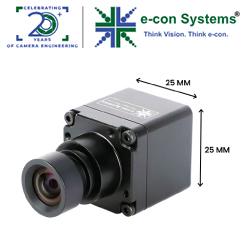Yale Robotics Engineers Collaborate on Study of Superior Grasping Ability of Primates
Scientists are coming to grips with the superior grasping ability of humans and other primates throughout history.
In a new study, a research team led by Yale University found that even the oldest known human ancestors may have had precision grip capabilities comparable to modern humans. This includes Australopithecus afarensis, which appears in the fossil record a million years before the first evidence of stone tools.
Yale robotics engineers Thomas Feix and Aaron Dollar collaborated on the research with anthropologist Tracy Kivell of the University of Kent and the Max Planck Institute for Human Anthropology, and primatologist Emmanuelle Pouydebat of the French National Centre for Scientific Research. Their findings appear in the Journal of the Royal Society Interface.
Using measurements of the digits' segments, the team created a kinematic model of the thumb and index finger of the skeletons of living primates and fossil remains of human ancestors. It is the first such model of digit movement during precision grasping and manipulation in a broad sample of humans, non-human primates, and fossil hominins.
"The model reveals that a long thumb or great joint mobility alone does not necessarily yield good precision manipulation," said Feix, who is corresponding author of the study. "Compared to living primates, the human hand has the largest manipulation potential, in particular for small objects."
Past studies of precision grasping in primates have focused on digit posture -- contact between the hand and the object -- or the length of the thumb relative to the fingers. The new study introduces a novel method for analyzing the interaction between the thumb and index finger, which is the foundation of stable grasping of small objects.
Manual dexterity is traditionally viewed as a key adaptation that separated the earliest primates from other early mammals. It is thought that such abilities evolved in response to no longer needing hands for locomotion, as well as the mechanical demands of using tools.
Yet there remains debate about the gripping capabilities of early fossil hominins, especially regarding the use of tools. The new study may shed light on some of those issues. For instance, the study suggests that the early human species Australopithecus afarensis may have had greater dexterity than what was required for cutting with a stone, including manipulative and tool-related behaviors that may not have been preserved in the archaeological record.
http://www.yale.edu
Featured Product

3MP HDR IP69K Camera for Robotics & Autonomous Vehicles
STURDeCAM31 from e-con Systems® is designed to make robotics and autonomous vehicles safer and more reliable. Powered by the Sony® ISX031 sensor and featuring GMSL2 interface, this compact 3MP camera delivers 120dB HDR + LFM imaging with zero motion blur — even in the most challenging outdoor conditions. Engineered to automotive-grade standards, STURDeCAM31 is IP69K certified, making it resistant to dust, water, vibration, and extreme temperatures. With support for up to 8 synchronized cameras, it enables powerful surround-view and bird's eye systems on NVIDIA® Jetson AGX Orin™.
